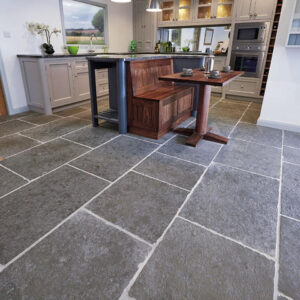Exploring Toyota Dynamic Radar Cruise Control (DRCC): The Future of Automated Driving
Toyota Dynamic Radar Cruise Control (DRCC) is an advanced driver assistance feature designed to enhance the traditional cruise control system with adaptive capabilities. This technology allows vehicles to maintain a set speed while also automatically adjusting to keep a safe distance from the vehicle ahead. By using radar and camera technology to monitor the speed and distance of the vehicle in front, DRCC can slow down or accelerate the car as needed, providing a more relaxed driving experience, especially in varying traffic conditions.
DRCC is part of Toyota’s suite of active safety features known as Toyota Safety Sense (TSS), aimed at preventing accidents and improving driver and passenger safety. The system operates at a full range of speeds on some models, making it especially useful in congested traffic situations. It also includes a Stop and Go function that can bring the vehicle to a complete stop and resume following with traffic flow, depending on the system’s version and the vehicle model.
By integrating technology that can adapt to the flow of traffic, Toyota’s Dynamic Radar Cruise Control helps reduce driver fatigue and enhances safety on the road, making long drives and commutes more comfortable and less stressful.
In an era where automotive technology is advancing at an unprecedented pace, Toyota’s Dynamic Radar Cruise Control (DRCC) stands out as a hallmark of innovation and safety. Part of the Toyota Safety Sense™ (TSS) suite, DRCC is designed to elevate the driving experience by blending convenience with cutting-edge safety features. This intelligent system goes beyond traditional cruise control, offering drivers a more relaxed, safer, and intuitive driving experience, especially on long journeys and busy highways. This article delves into the intricacies of DRCC, highlighting its functionality, benefits, and how it signifies a step closer to fully automated driving.
Understanding Dynamic Radar Cruise Control
At its essence, DRCC is an advanced form of cruise control that utilizes radar technology to maintain a set speed while automatically adjusting to the speed of the vehicle ahead. This ensures a safe following distance without the need for manual speed adjustments by the driver. Whether cruising on a highway or navigating through traffic, DRCC offers a seamless driving experience by adapting to the ever-changing road conditions.
How DRCC Works
The heart of DRCC lies in its radar sensor, typically located behind the Toyota badge on the front grille, and in some models, a front-facing camera on the windshield. These components work in tandem to monitor the road ahead, detecting vehicles and their speed. Here’s a closer look at the operational mechanics of DRCC:
- Speed Setting: The driver activates DRCC and sets a cruising speed, just like conventional cruise control.
- Vehicle Detection: The radar sensor and camera scan the road ahead, detecting vehicles in the same lane and measuring their speed and distance.
- Speed Adjustment: If the system detects a slower-moving vehicle ahead, it automatically adjusts the throttle and can apply the brakes to maintain a pre-set following distance. This distance can usually be adjusted by the driver to suit their comfort level.
- Resuming Speed: Once the lane ahead is clear, DRCC automatically accelerates the vehicle back to the set cruising speed.
The Advantages of DRCC
Enhanced Safety: By maintaining a safe following distance, DRCC significantly reduces the risk of rear-end collisions, especially in unpredictable traffic conditions.
Driver Convenience: DRCC alleviates the need for constant speed adjustments, providing a more relaxed driving experience, particularly on long journeys or in heavy traffic.
Improved Fuel Efficiency: The system’s ability to maintain optimal speed and avoid unnecessary acceleration and deceleration can contribute to better fuel efficiency.
A Step Towards Autonomous Driving: DRCC represents Toyota’s commitment to pioneering technologies that pave the way for future autonomous driving systems.
Operating DRCC: Best Practices
To ensure the optimal use of Dynamic Radar Cruise Control, consider the following tips:
- Stay Alert: While DRCC significantly enhances driving safety and convenience, it’s crucial for drivers to remain attentive to their surroundings and be ready to take manual control if necessary.
- Understand the System’s Limits: Like any technology, DRCC has its limitations, particularly in adverse weather conditions or scenarios where lane markings are unclear. Familiarizing oneself with these limitations is key to maximizing the system’s benefits.
- Regular Maintenance: Keeping the vehicle’s radar sensor and camera clean and unobstructed is essential for the proper functioning of DRCC. Regular check-ups as part of the vehicle’s maintenance routine ensure sustained performance.
Navigating the Future with Toyota DRCC
Toyota’s Dynamic Radar Cruise Control is more than an advanced feature; it’s a testament to Toyota’s vision of making driving safer, more efficient, and enjoyable. As we edge closer to the era of autonomous vehicles, DRCC exemplifies how intelligent systems can significantly improve the driving experience. By incorporating such technologies, Toyota not only enhances individual journeys but also contributes to the broader goal of safer roads for everyone. With DRCC, Toyota continues to lead the way in automotive innovation, reaffirming its commitment to safety, convenience, and the future of driving.


